Growing and Preparing Show Roses
Growing show roses is a higher-level pursuit in rose culture. For experienced rosarians, this practice can be a challenging and rewarding way to advance rose production. Show roses are grown for the specific purpose of being entered into a contest and judged based on the specific characteristics of each flower.
Show roses generally take more care and attention than roses planted to enhance the garden or landscape. The objective of growing show roses is to attain large, symmetrical blooms balanced with glossy green foliage either on single stems (standards, Figure 1) or in sprays (Figure 2). Show rose judging is accomplished using a point system, with 75 percent weighted to the bloom quality and 25 percent to the foliage. When two or more blooms receive identical scores, judges may use subjective means to determine winners.
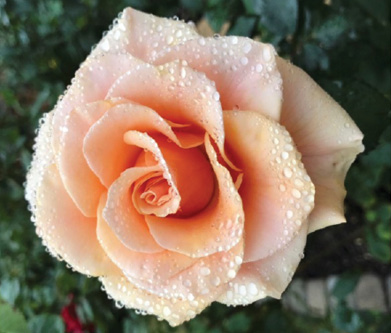
Figure 1. A single-stem hybrid tea rose.
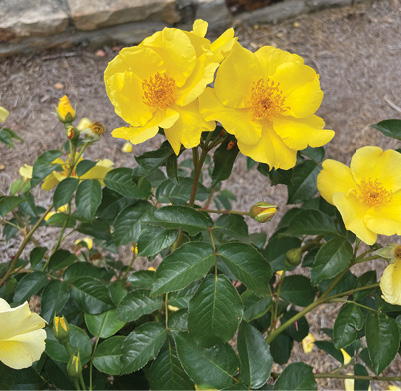
Figure 2. A rose in a spray.
Preparation
Fall is the optimum season for preparing a new rose garden. Once prepared, the site can remain idle until spring planting time arrives. This also allows time for fall soil pH tests to be processed by the MSU Soil Testing Lab. See Extension Publication 3856 Submitting Samples for Soil Testing.
The American Rose Society Handbook for Selecting Roses contains over 3,000 rated varieties. It has listings of past national category winners, which have a rating of 9.3 to 10.0 and are referred to as “One of the Best Roses Ever.” This handbook can be purchased online and has information concerning color, level of fragrance, and petal count.
Purchasing Show Roses
December and January are ideal times to peruse commercial rose catalogs to preorder plants for spring delivery. The most common ways to purchase rose bushes are bare root, own rooted, or grafted rootstock. Two of the most common rootstocks used in the South are Dr. Huey and Fortuniana. The purpose of using known rootstock is to widen the growing range where different cultivars can thrive. Roses are typically grown and sold in plastic containers (Figure 3) ranging from 4 inches in diameter to 5 gallons. They are also sometimes grown and packaged in plastic bags.
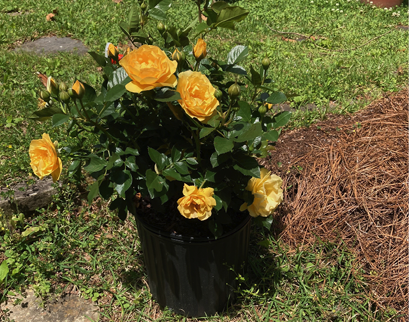
Figure 3. A rose plant grown in a container.
Planting Site
Select a planting/growing site in full sun that receives a minimum of 6–8 hours of direct sunlight per day. Keep in mind that as trees produce leaves in the spring, some bed areas may become shaded. This could limit available sunlight and reduce the quantity and quality of rose blooms.
Next, decide whether the roses will grow directly in the ground (native soil), in raised beds, in containers, or a combination of these. Each method requires different soil preparation. In-ground planting may require soil amendments based on the type of soil present. Add only the soil amendments that are needed to improve the site. Raised beds generally follow the three-part mix of equal amounts of soil, sand, and compost (Figure 4). Pots or containers are usually filled with high-quality potting soil or a three-tiered mix, depending on the size of the pots.
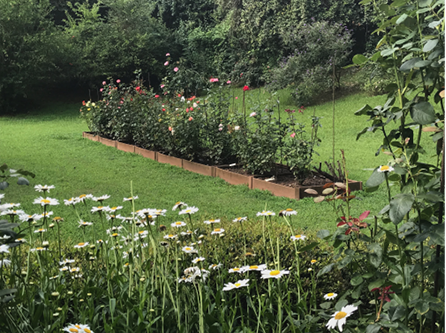
Figure 4. Roses growing in a raised bed.
Roses do not tolerate wet roots or soil with poor drainage. The potential for water retention should be determined before planting. For in-ground beds, dig a hole and fill it with water to see if the soil drains adequately. Raised beds and containers must have adequate drainage (2 inches per hour).
Measure the beds to determine how many roses to purchase. Most show roses need at least 3 feet between them and other plants or structures to produce quality blooms. This can vary based on the class of roses planted. Hybrid teas, for example, are more upright than grandifloras or floribundas and can be planted closer (Figures 5 and 6). Decide before making purchases if you want to focus on one type of rose and its cultivars or on a mixed class of rose bushes.
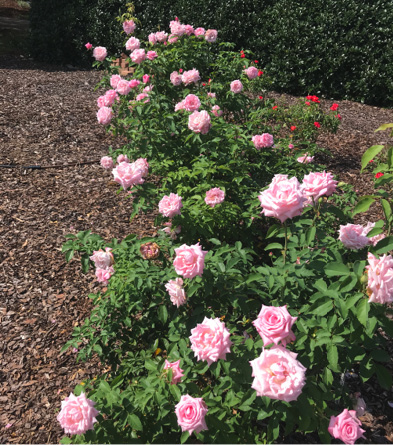
Figure 5. Hybrid tea roses can be planted more closely together than grandiflora or floribunda roses.

Figure 6. Grandiflora and floribunda roses need at least 3 feet between them.
Planting Time and Methods
Show roses do best when planted in the early spring (March in most areas of Mississippi). Roses can tolerate soil pH levels ranging between 6.0 and 7.0 but do best with a pH of 6.5.
Bare-root roses can dry out before planting, causing poor growth or plant death. Once the plant shipment arrives, soak the roots in water for 24 hours before planting. Roots that extend beyond the general length of the root mass may need to be clipped before planting. The planting hole should have a pyramid of soil within it so that the roots can be gently arranged on top (Figure 7). This helps prevent the roots from winding (circling) around the base of the plant, which can eventually girdle the roots and kill the plant.
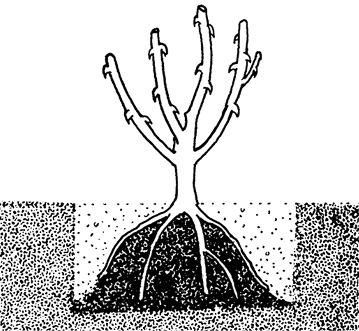
Figure 7. Bare-root rose placed in a well-prepared hole.
When planting containerized roses, dig a hole that is twice the size of the rootball. Place the rootball level with or slightly above the existing soil line. The soil should fill the entire hole to eliminate any air pockets. For either method, if soil amendment is required, mix it thoroughly with the existing soil.
Newly planted roses must be watered consistently for the first 2–3 weeks to keep them from drying out. The frequency and quantity of water will depend on the temperature and rainfall received. Once roses are established, 2 inches of water per week is the normal requirement, although drought conditions and high heat dictate additional watering. Deep watering two to three times per week is better than frequent, light watering that causes shallow root development.
Plant Maintenance
For general landscape roses, always follow soil test recommendations for fertilization rates and timing. Show roses may require additional fertilizer to produce show-quality blooms. Monthly feedings between March and September are recommended. Rates applied depend on the product used and the label’s directions.
If not following soil test recommendations, apply granular, controlled-release fertilizer on top of the soil at planting for container-grown roses and to bare-root roses once significant foliage growth occurs. Do not add it into the planting hole. During hot summer months, show roses may benefit from the addition of a liquid fertilizer. Do not fertilize beyond the end of September.
Keeping the rose garden deadheaded, weeded, pruned, and cleaned is essential to having a disease-free garden with fewer pests and beautiful, healthy blooms for shows. In the first growing season, prune canes to the desired length for optimum display or to deadhead uncut roses. Cut the stems off above an outward facing, quarter-inch bud that is located just above the first five-leaflet leaf. Begin normal pruning techniques in the second growing season.
Prune long whips only in the late fall to early winter. In northern Mississippi where frost is more prevalent, adding mulch around the roots can be beneficial. This also helps to retain moisture and minimize weeds. Any type of clean mulch can be used.
Show rose pruning may begin in February or March, depending on your location in the state and on the weather patterns. Show roses are pruned to two standard lengths: 18 inches for fewer but bigger blooms, or 24 inches for more but smaller blooms. This recommendation is specific to hybrid teas (Figure 8) since floribundas and grandifloras have a more bush-like shape and clustered flowers, which generally results in shorter stems. Other rose classes have different pruning techniques depending on their size, shape, and bloom type.
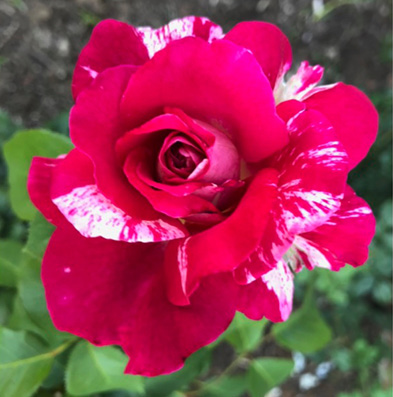
Figure 8. Neil Diamond hybrid tea rose.
If a rose bush has only one or two remaining healthy canes after a few years of growth, it is generally time to replace the bush. If you wish to have plants in full bloom in the entire garden at one time, prune them, including blooms and buds, approximately 5 weeks before the event. This will encourage a flush of blooms when they are needed.
To avoid the potential for early black spot fungus, prune affected rose canes as soon as new growth appears in the spring, before a fungicide spray program begins. This is usually near the time forsythia has bloomed. If applying a fungicide to help control diseases, always follow the label’s directions for application rates and times.
Preparing for a Rose Show
Protect potential show roses from rain by placing a half-gallon milk container mounted on a stake over single buds. Protect roses from insects by tying an organza jewelry bag over the buds. Use the bag’s drawstring to close the bag and hold it in place.
The goal for showing roses is to time prime-condition flowers to coincide with the show date. The stage in which they are cut depends on whether the show is local or far away. The most prize-winning roses are those that are freshly cut, especially if they are in a class to be fully open and showing the stamen. Cut roses the day before the show and place them in water-filled containers. Make sure the thorns do not tear foliage or flowers. Cut these flowers with a longer cane than needed for exhibition staging, then do a final prune when placing them into the show vase (Figure 9).
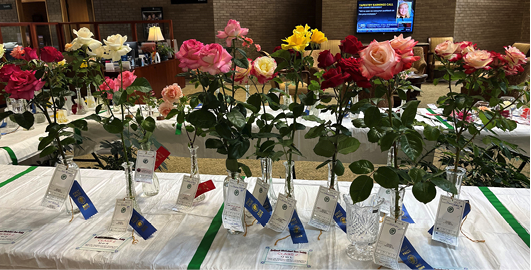
Figure 9. Show rose winners.
Show roses can be cut a few days in advance if a reliable refrigerator, florist cooler, or CoolBot system is available. This works well if roses are peaking too soon before the show. Roses that are refrigerated can experience a loss of flower color vibrancy, flower shriveling, and a lack of petal crispness. They are best cut the night before or the day of an exhibition. Judges can tell if flowers have been refrigerated and will usually choose the non-refrigerated bloom if given two blooms of equal quality.
Roses must be kept cool during transport. Leaving them in a warm vehicle is very likely to result in damage. Some people have built Styrofoam coolers to accommodate vased roses transported upright. Any method that protects the plant material during travel is desirable.
A full range of implements can be used in rose gardening and at shows. They include clippers, loppers, small pruners, carrying containers, vases, miniature paint brushes, Q-tips, cuticle scissors, foam wedges, and plastic wrap. Plastic wrap or wedges of floral foam may be used to support rose stems, but it must be held below the top of the vase. Q-tips can be used to open tight blooms but must be removed before judging to avoid disqualification. Every entry must be labeled. Entries must contain rose specimens without any broken heads or stems.
Conclusion
This publication does not contain all the rules and information necessary for showing roses. Check with your show chairperson for specific rules and regulations. Preparing and following a systematic schedule makes it possible to produce lovely exhibition stage roses for shows and to have roses throughout the growing season to share with friends, family, and groups. Looks for these MSU Extension publications for information on spraying, fertilizing, safely handling chemicals, using natural products, building raised beds, pruning, and identifying diseases, pests, and nutritional deficiencies:
P2472 Insect Pests of Roses
P2651 Selecting Landscape Shrubs
P2746 Notes from the Veterans Memorial Rose Garden
P2827 The Plant Doctor: Black Spot, Cercospora Leaf Spot, and Powdery Mildew of Roses
P2835 Roses in Mississippi
P3856 Submitting Samples for Soil Testing
Also consult these American Rose Society materials:
American Rose Society Handbook for Selecting Roses
2021 Guidelines and Rules for Judging Roses
2021 Consulting Rosarian Manual
The information given here is for educational purposes only. References to commercial products, trade names, or suppliers are made with the understanding that no endorsement is implied and that no discrimination against other products or suppliers is intended.
Publication 3921 (POD-06-23)
By Jeff Wilson, PhD, Assistant Horticulture Professor, North Mississippi Research and Extension Center, Tracy Kramer, Union County Master Gardener, and Susan McGukin, Extension Program Associate, Lee County Master Gardener Coordinator.
The Mississippi State University Extension Service is working to ensure all web content is accessible to all users. If you need assistance accessing any of our content, please email the webteam or call 662-325-2262.



